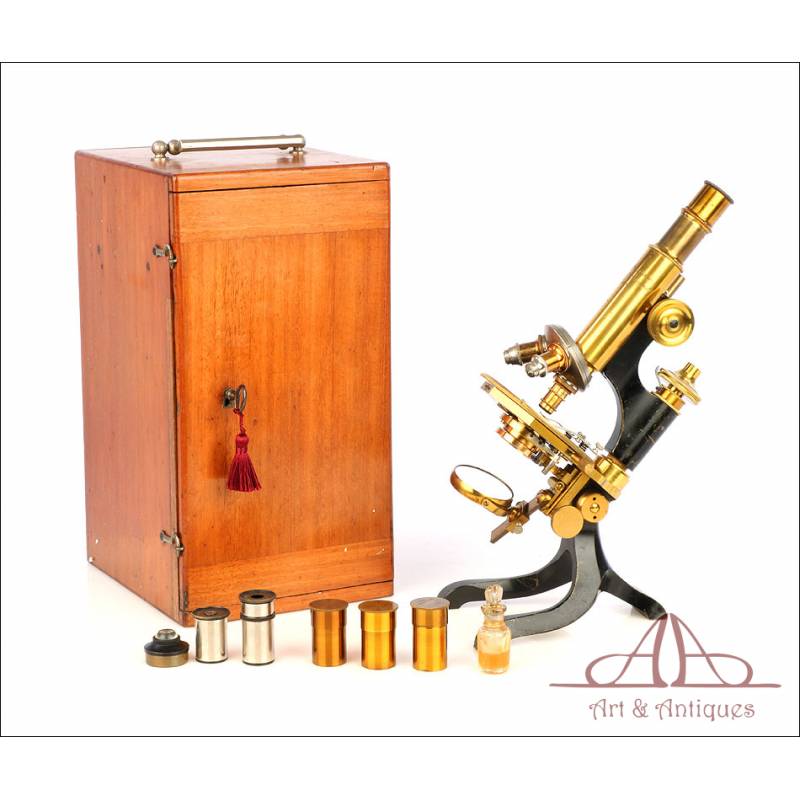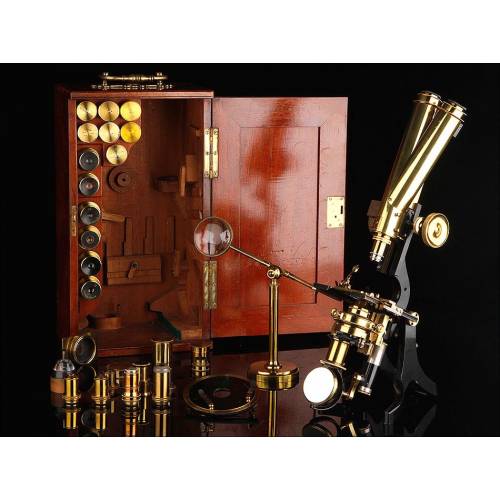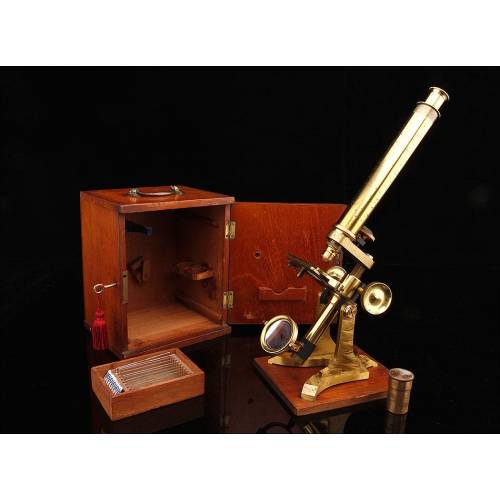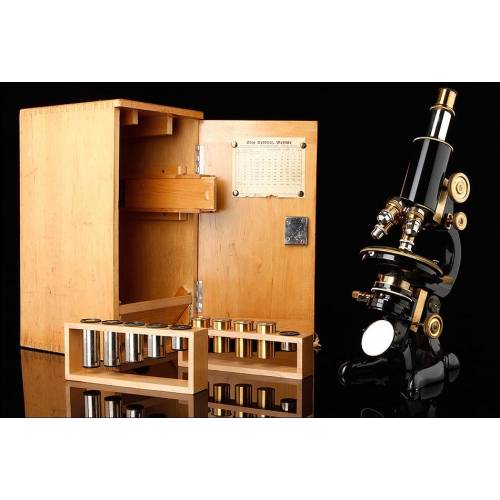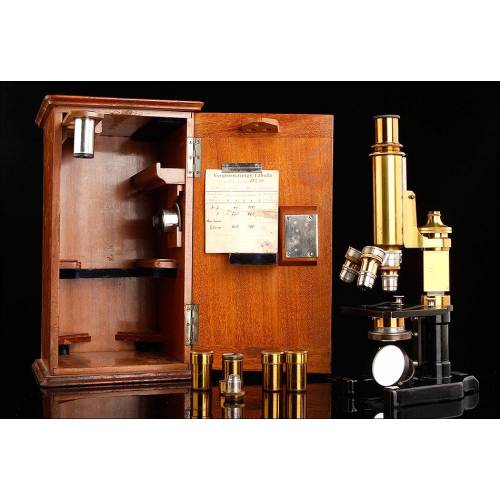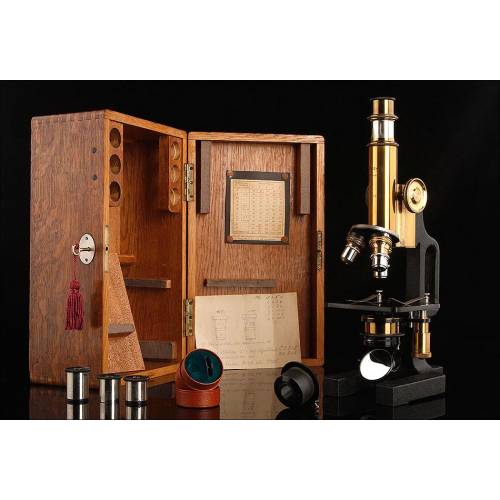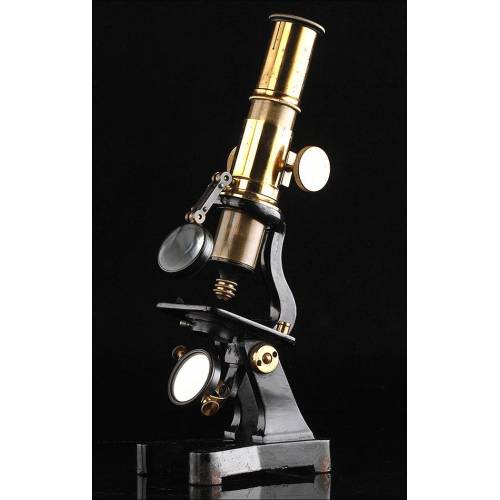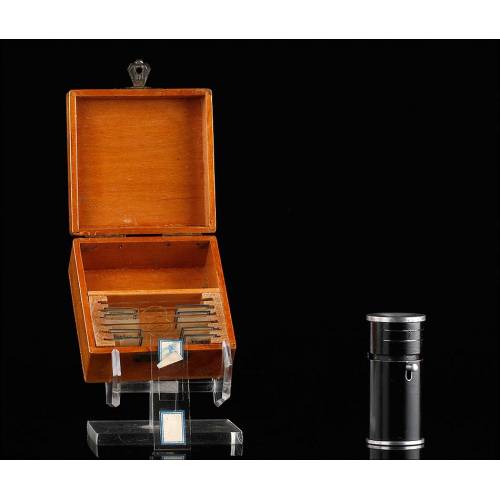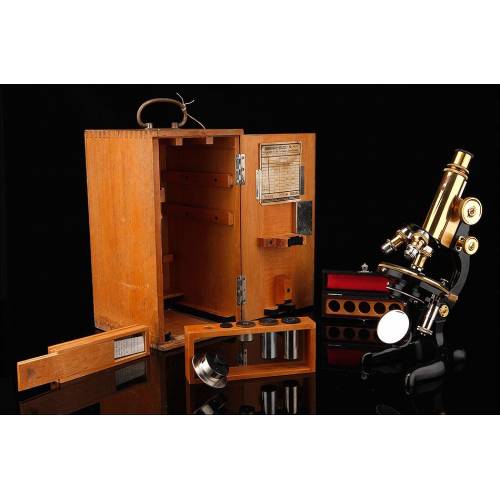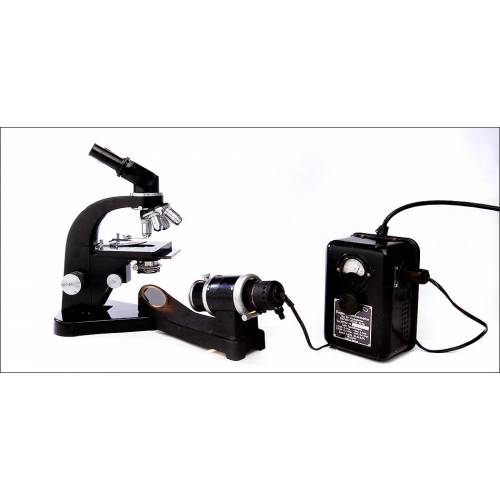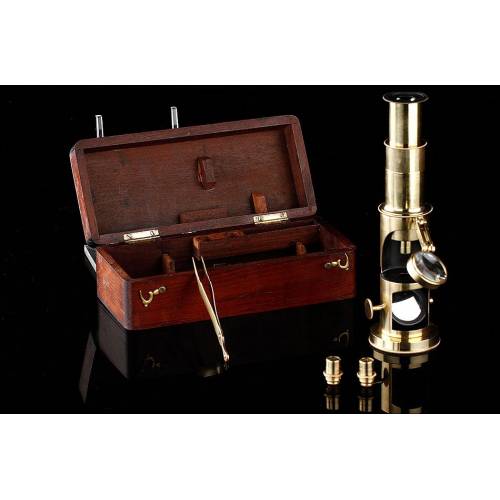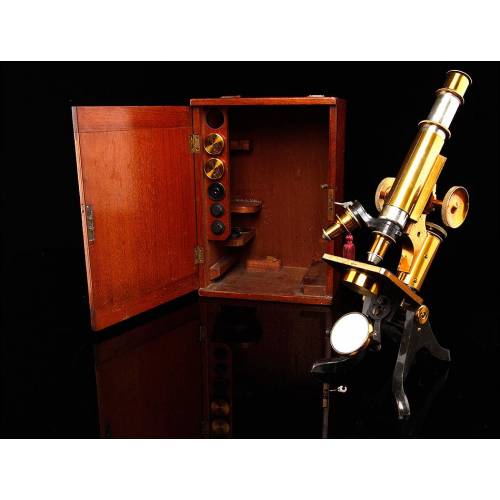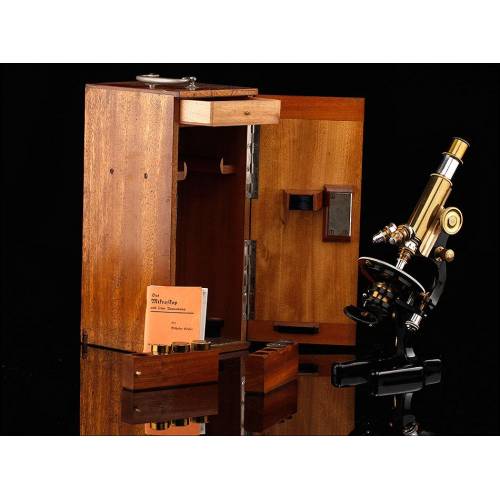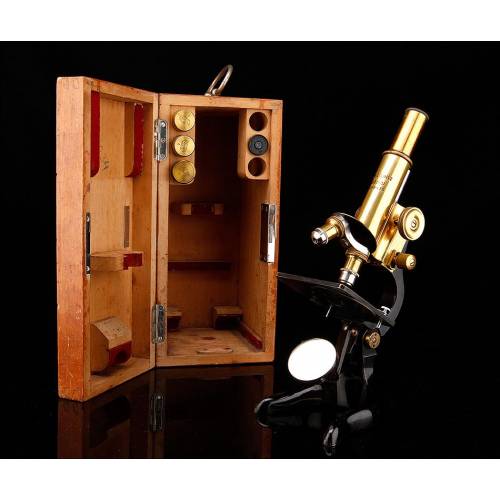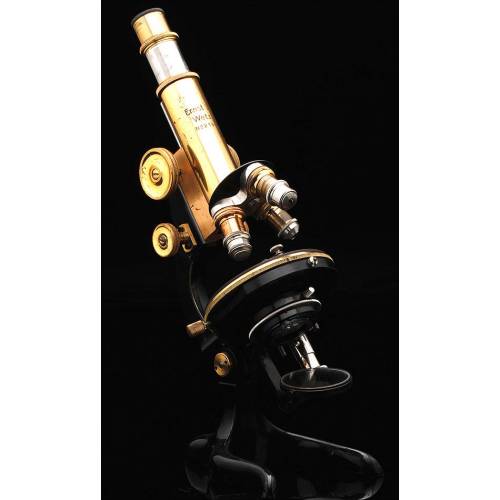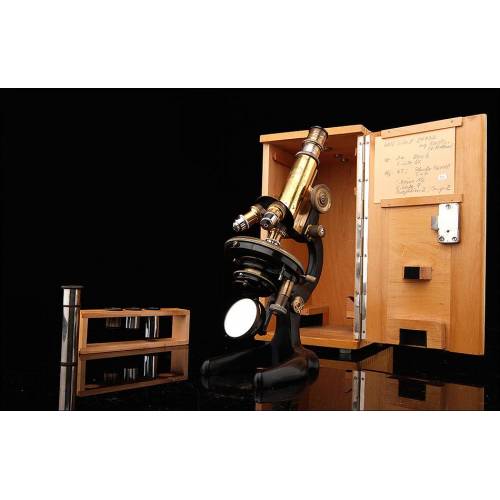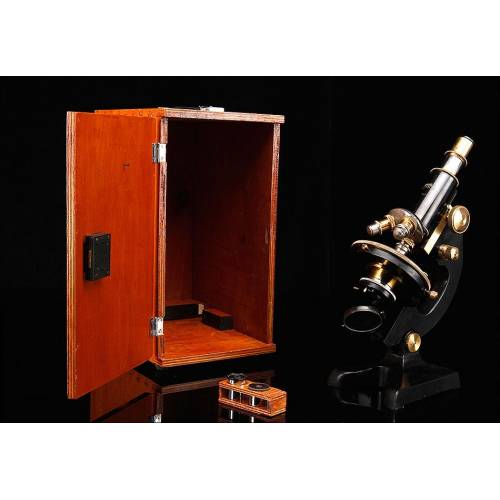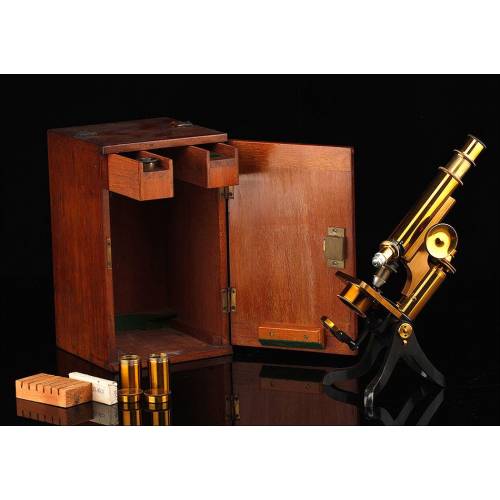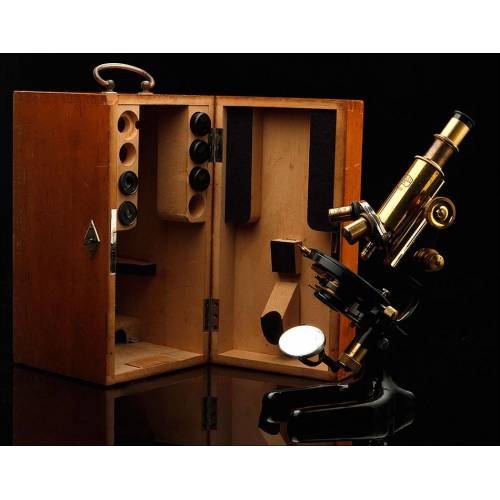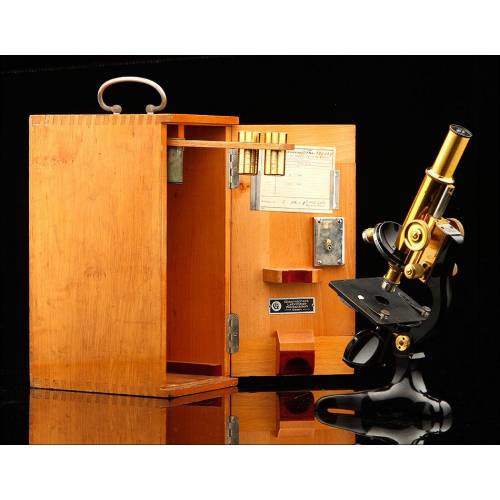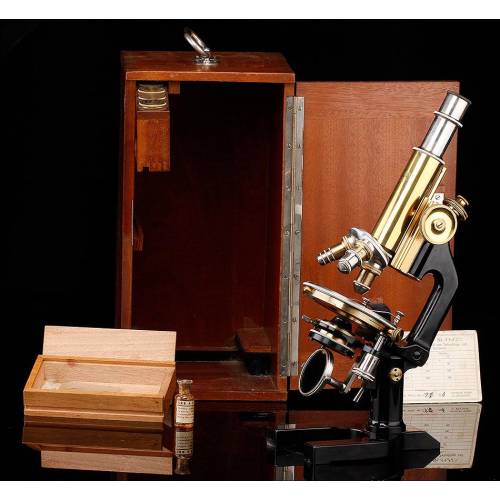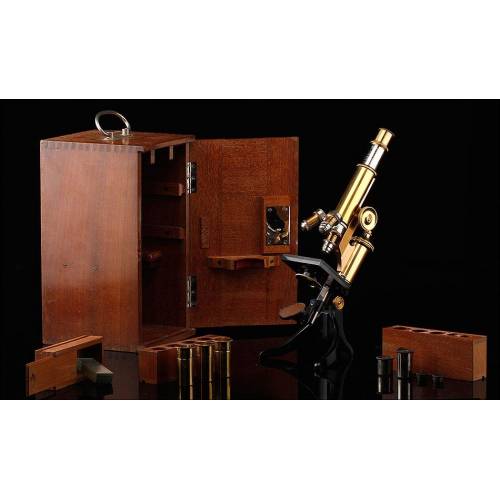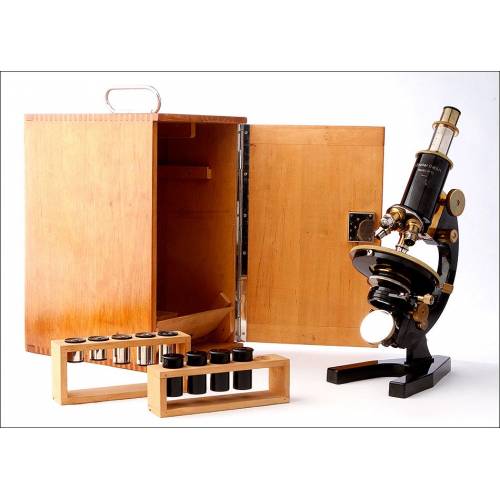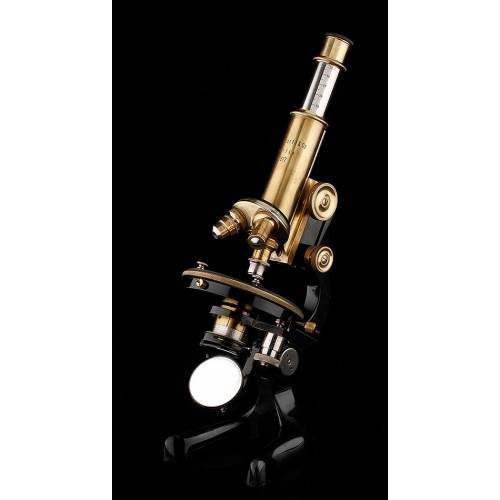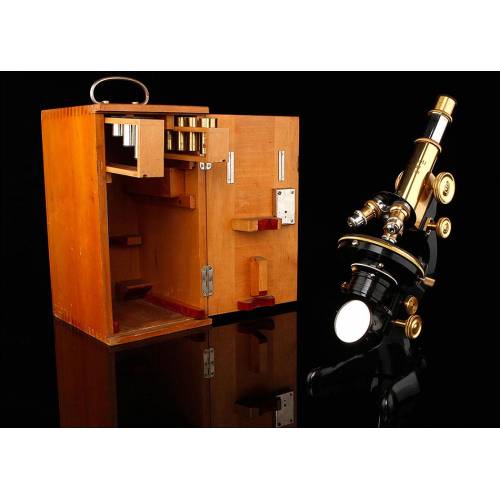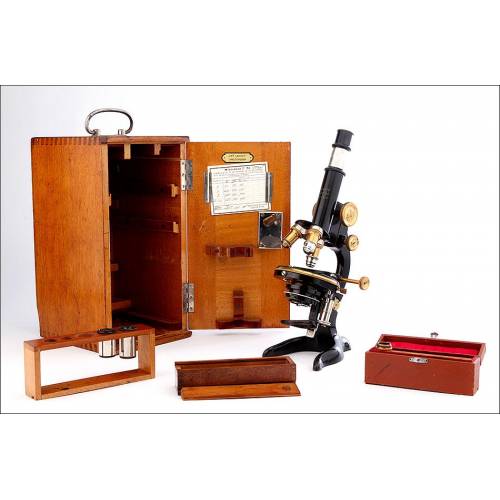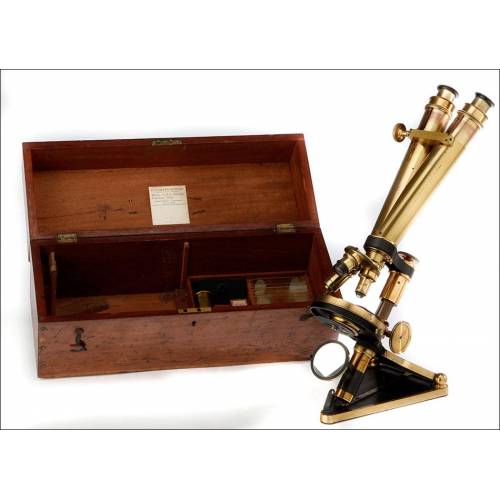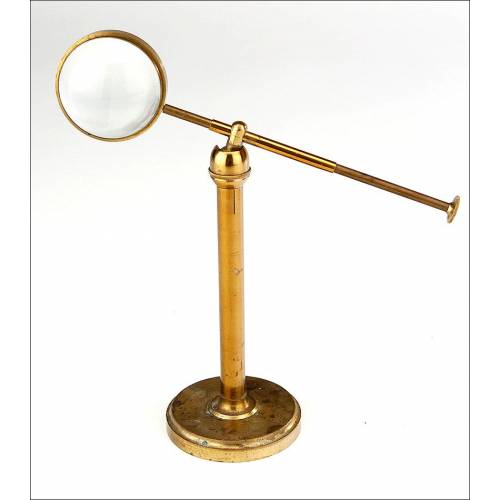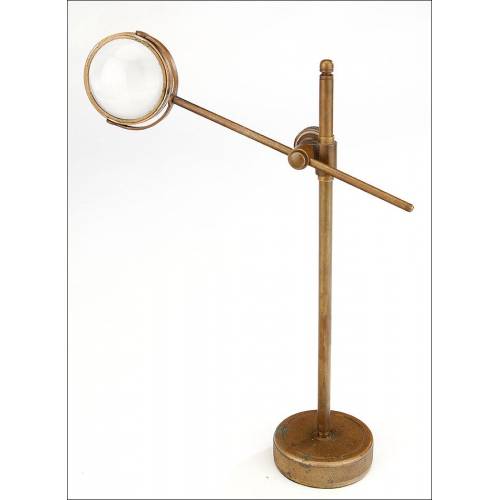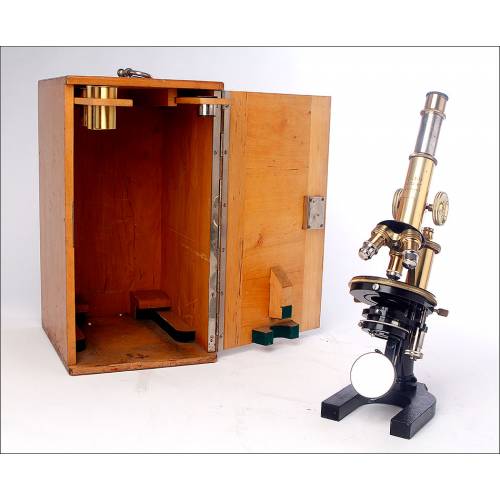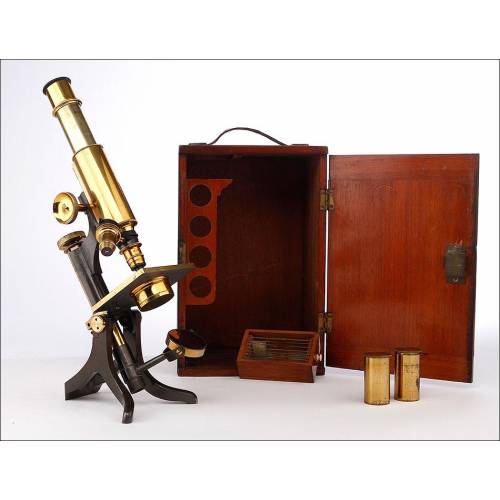C-883
Rare Antique Stiassnie Brass Microscope. France, Circa 1900
Very rare antique M. Sitassnie microscope very well preserved. With set of accessories. Original and high quality instrument.
Sold!
Very rare Stiassnie French brass microscope made in the early 20th century (circa 1900), in outstanding condition and really fine working order. This device is a high-quality instrument made by a scarcely known company. It comes in its original mahogany wooden box and is accompanied by a complete accessory set with three eyepieces and three lenses, all signed by the maker. The set includes a small oil flask for the maintenance of the oil-immersion lens, sealed by the trace of time and the use. The microscope mounts a black-enameled metal foot and brass mobile component parts. The brass preserve the original transparent lacquered finish that protects the metal and provides it with a very attractive patina. These parts move fluidly and softly, turning the operation of the device into a real pleasure for the user. The rack-and-pinion system is in perfect condition and so is the fine adjustment mechanism. The microscope mounts a three-lens revolving nosepiece and preserves the original shutter and double-sided mirror, also in good condition. The turret bears the manufacturers name and address, engraved by hand in a lovely cursive lettering: M. Stiassnie 204 Bould. Raspail Paris. The wooden box keeps the original lock and key in working order and is equipped with four small drawers for the accessories and the samples. This very rare Stiassnie French brass microscope will shine in any collection for its quality, good condition and uniqueness. Dimensions: Width: 6.8 in / 17 cm. Height: 14 in / 33 cm.Stiassnie Microscopes History The history of these rare microscopes starts out with Constant Vérick, an optician who was an apprentice with Edmund Hartnack. Hartnack was a nephew of Georges Oberhauser, one of the most renowned opticians and microscope manufacturers of the 19th century. Maurice Stassnie, Vericks son-in-law, was the foreman of his father-in-law workshop until he eventually became the owner of the business in 1882. The firm was located in the 43 Rue des Ecole of Paris, but it would move later to the 204, Boulevard Raspail. In 1892 Maurice founded a new company in partnership with his brother and named it Stiassnie Fréres, Paris. After World War II the business could not compete with the other German makers and went into bankruptcy. In the 1970s an attempt was made to relaunch the business under the name Sté. Nouvelle de Microscopie Stiassnie, but it failed and the company eventually disappeared.

